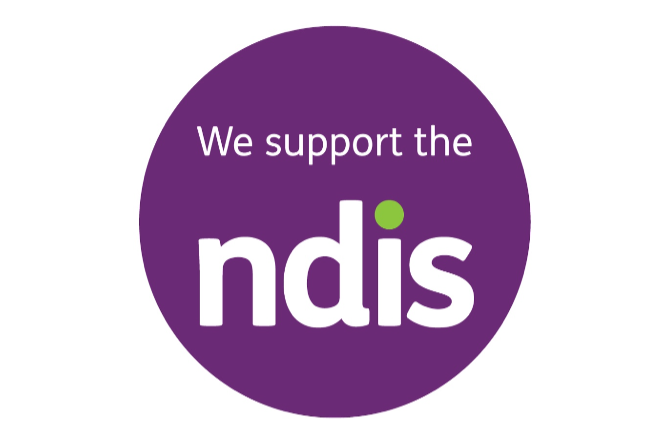What Are Continence Aids and How to Get Them as a NDIS Participant

Continence aids are essential products that help individuals manage incontinence—a condition characterized by the loss of control over bladder or bowel movements. This condition can affect people of all ages, especially those with disabilities, the elderly, and individuals recovering from surgery or childbirth. Continence aids not only provide comfort but also help maintain dignity and hygiene. Types of Continence Aids There are several types of continence aids designed to meet various needs: Absorbent Pads and Pants: These are worn inside regular underwear or as standalone garments to absorb urine or feces, keeping the skin dry and preventing irritation. Catheters: Thin tubes inserted into the bladder to drain urine directly into a bag, often used by individuals with severe mobility issues or those who cannot control bladder function. Condom Catheters: Specifically for men, this device fits over the penis and collects urine in a bag attached to the leg. Commode Chairs: Portable toilet chairs beneficial for individuals with limited mobility, allowing them to use the toilet more conveniently, especially at night. Protective Bedding: Mattress protectors and absorbent bed pads that keep the bed dry and clean, reducing the need for frequent linen changes. Skincare Products: Special creams, wipes, and washes designed to protect the skin from irritation and infection due to prolonged exposure to moisture. The National Disability Insurance Scheme (NDIS) and Continence Aids The National Disability Insurance Scheme (NDIS) is an Australian government initiative that provides support for people with disabilities. The NDIS offers funding for various products and services, including continence aids, as part of the participant’s overall care plan. To access continence aids through the NDIS, participants need to have their needs assessed and included in their NDIS plan. Here’s how to obtain these aids: Assessment and Planning The first step in acquiring continence aids through the NDIS is a thorough assessment by a healthcare professional, such as a continence nurse or an occupational therapist. This assessment determines the specific aids required based on the individual’s condition, lifestyle, and goals. Once the assessment is complete, the healthcare professional will provide a report that can be included in the participant’s NDIS plan. This report is essential as it justifies the need for continence aids and helps to secure funding. Including Continence Aids in the NDIS Plan During the NDIS planning meeting, it’s crucial to discuss the continence needs thoroughly. The planner will work with the participant to include these aids in their plan under the category of “Assistive Technology” or “Consumables,” depending on the type of aids required. The Role of Support Coordinators Support coordinators play a critical role in helping NDIS participants manage their plans and access necessary services, including continence aids. They act as a bridge between the participant, healthcare professionals, and suppliers, ensuring that the participant’s needs are met efficiently. Support coordinators assist in: Understanding the NDIS plan: They help participants understand their plan and what funding is available for continence aids. Selecting Suppliers: Coordinators help participants choose registered NDIS providers or suppliers that offer a wide range of products and provide ongoing support and advice. Managing Orders: Support coordinators ensure that orders are placed regularly and that the participant does not run out of essential supplies. They also assist with troubleshooting any issues with suppliers. Managing Funding and Orders Participants can manage their NDIS funds themselves, through a plan manager, or via the NDIS itself. It’s important to keep track of spending and ensure that orders are placed regularly. Support coordinators can help manage these tasks, ensuring that the participant’s continence needs are consistently met. Conclusion Continence aids are vital for maintaining dignity, comfort, and quality of life for those with incontinence issues. For NDIS participants, accessing these aids is a process that involves assessment, careful planning, and ongoing management. Support coordinators play an integral role in this process, helping participants navigate their NDIS plans and ensuring they receive the necessary products to live more independently and confidently.
The NDIS Price Guide: How to Access It and What You Need to Know

Navigating the National Disability Insurance Scheme (NDIS) can be challenging, particularly when it comes to understanding and managing your budget. The NDIS Price Guide is a crucial tool designed to assist participants, providers, and plan managers by outlining the maximum allowable prices for various supports and services. This blog post provides an overview of the NDIS Price Guide, its importance, and where to access it. What is the NDIS Price Guide? The NDIS Price Guide is an official document released by the National Disability Insurance Agency (NDIA). It details the maximum prices that can be charged for a range of supports and services under the NDIS. This guide ensures transparency, consistency, and fairness in pricing, helping to manage funding effectively and equitably. Key Features of the NDIS Price Guide Pricing Details: The guide outlines maximum allowable prices for different types of supports, including personal care, therapy services, and community participation. These prices are categorized to make it easier to understand how funds can be allocated. Regional Variations: To account for varying costs of living and service delivery across Australia, the guide includes regional price adjustments. This means that prices may differ depending on whether you are in a major city or a rural area. Service Delivery Modes: The guide specifies pricing for different modes of service delivery, such as in-person and remote supports. This flexibility helps accommodate diverse needs and preferences. Price Limits and Caps: Each support item has a price limit, ensuring that services are priced fairly and consistently. This helps in preventing overcharging and ensures that participants get value for their funding. Why the NDIS Price Guide Matters The NDIS Price Guide is vital for several reasons: Budget Management: It helps participants manage their budgets effectively by providing clear information on pricing limits. Fair Pricing: Ensures that providers charge fair and consistent prices for their services. Transparency: Offers transparency in how funding is allocated and used, which helps build trust between participants and providers. Where to Access the NDIS Price Guide Accessing the NDIS Price Guide is straightforward. Here’s how you can obtain it: NDIS Website: The most direct way to access the NDIS Price Guide is through the official NDIS website. Navigate to the “Pricing” section where you’ll find the latest version of the Price Guide available for download. NDIS MyPlace Portal: If you have an NDIS account, you can log into your Myplace Portal. The Price Guide is often available here, along with other relevant resources. Contact NDIS Support: If you’re having trouble accessing the guide online, you can Contact NDIS support. They can provide you with a copy or direct you to the appropriate resources. Plan Managers: Many NDIS Plan Mangers also have access to the Price Guide and can provide it to you upon request. They can also offer guidance on how to use it effectively in managing your plan. Conclusion The NDIS Price Guide is an essential resource for understanding and managing NDIS funding. By accessing the guide through the NDIS website, MyPlace portal, or through NDIS support channels, you can ensure that you are making informed decisions about your services and supports. Stay informed and make the most of your NDIS plan by regularly consulting the Price Guide and using it to manage your budget effectively. For the latest updates and detailed information, always refer to the official NDIS resources.
Navigating the NDIS Support Worker Screening Check: A Guide to Service NSW Websites and Centres

The National Disability Insurance Scheme (NDIS) Worker Screening Check is a crucial measure designed to ensure the safety and well-being of participants who rely on NDIS services. In New South Wales (NSW), this screening process is streamlined through Service NSW, both online and in-person, to efficiently handle applications and clearances for prospective workers. Here’s a comprehensive guide on how the NDIS Support Worker Screening Check is managed through the Service NSW website and Service NSW centres. Understanding the NDIS Support Worker Screening Check The NDIS Worker Screening Check is a mandatory process that evaluates whether an individual poses a risk to NDIS participants. This check assesses criminal history, any past misconduct, and prior restrictions on working with vulnerable populations. It is a fundamental step to ensure that only those who meet stringent safety criteria are employed in roles involving direct support to people with disabilities. How to Complete the Screening Check via the Service NSW Website Application Submission: The Service NSW website offers an accessible platform for individuals to start their NDIS support worker screening check application. Prospective workers can visit the Service NSW website and navigate to the Worker Screening section. Here, they can fill out the online application form, providing necessary personal details and consent for a criminal history check. Document Upload: During the online application process, applicants may need to upload identification documents and other required information. The Service NSW website provides clear instructions on the types of documents needed, ensuring that the submission process is straightforward. Payment and Submission: The online application requires payment of a fee, which can be completed through the Service NSW payment gateway. Once the application form and payment are submitted, the information is processed, and applicants receive a confirmation email outlining the next steps. Tracking Application Status: Applicants can track the status of their application through the Service NSW website. This online feature allows individuals to check the progress of their screening check and receive updates on their clearance status. How to Complete the Screening Check at Service NSW Centres In-Person Application: For those who prefer to handle the process face-to-face, Service NSW centres offer in-person assistance. Applicants can visit a Service NSW centre, where staff will guide them through the application process. They will need to provide personal information, consent for a criminal history check, and any necessary documentation. Verification and Processing: At the Service NSW centre, staff will review the application, process the criminal history check, and handle any required documentation. This in-person option can be beneficial for those who need additional support or have complex situations. Receiving Clearance: Once the criminal history check is completed and assessed, Service NSW issues a Worker Screening Clearance if the applicant meets all safety requirements. This clearance is valid for five years and must be verified by employers before hiring individuals for roles involving direct support to NDIS participants. Support and Assistance: Service NSW centres provide valuable support and assistance throughout the screening process. Staff are available to answer questions, assist with document submission, and ensure that the process runs smoothly. Why Choose Service NSW? Service NSW simplifies the NDIS support worker screening check process by providing accessible online services and convenient in-person assistance. Whether applying through the website or visiting a centre, applicants benefit from efficient processing, clear instructions, and professional support. Conclusion The NDIS Worker Screening Check is essential for maintaining high standards of care and safety for NDIS participants. Service NSW offers a user-friendly approach to completing this check, whether online or in-person, ensuring that the process is accessible and efficient. For more information or to begin the application process, visit the Service NSW website or a Service NSW centre. By leveraging these resources, prospective workers can navigate the screening process with ease, contributing to a safer and more reliable support system for people with disabilities.
NDIS Registered Providers: Ensuring Quality Support for Australians with Disabilities

The National Disability Insurance Scheme (NDIS) is a vital initiative in Australia that provides tailored support and services to individuals with disabilities. Central to the success of this program are NDIS registered providers. These providers play a crucial role in delivering high-quality care and services, ensuring that participants receive the best possible support. What Are NDIS Registered Providers? NDIS registered providers are organizations or individuals officially approved by the NDIS Commission. This registration indicates that they meet stringent standards set by the NDIS, ensuring that the services they offer are of the highest quality. The registration process involves thorough evaluations, including assessments of operational practices and adherence to the NDIS Code of Conduct. Why Choose NDIS Registered Providers? For NDIS participants, selecting a registered provider offers numerous advantages: Guaranteed Quality: NDIS registered providers adhere to the NDIS Practice Standards, ensuring that services are safe, effective, and of high quality. This regulation helps protect participants from receiving substandard care. Enhanced Accountability: The NDIS Commission oversees registered providers, ensuring they comply with regulations and address any complaints or issues promptly. This accountability gives participants peace of mind and recourse if problems arise. Funding Access: Registered providers are eligible to deliver services funded by the NDIS, making it easier for participants to access a range of supports tailored to their needs. Types of Services Offered by NDIS Registered Providers NDIS registered providers offer a broad spectrum of services, including: Personal Care: Assistance with daily living activities such as bathing, dressing, and meal preparation. Therapeutic Services: Access to allied health professionals including physiotherapists, occupational therapists, and speech therapists. Support Coordination: Help with managing and coordinating various supports and services. Community Participation: Programs designed to help individuals engage in social and recreational activities within their communities. How to Choose the Right NDIS Registered Provider When selecting an NDIS registered provider, consider the following: Service Types: Ensure the provider offers services that align with your specific needs. Provider Reputation: Look for feedback from other participants to gauge the provider’s reliability and quality. Alignment with Goals: Choose a provider that understands and supports your personal goals and preferences. Conclusion NDIS registered providers are integral to the success of the National Disability Insurance Scheme in Australia. They ensure that participants receive regulated, high-quality, and personalized support, significantly enhancing their overall quality of life. For Australians with disabilities, partnering with the right NDIS registered provider can make a profound difference in achieving their individual goals and improving their well-being. For more information on finding NDIS registered providers in Australia, visit the official NDIS website or consult local resources for guidance.
Understanding NDIS Core Supports: Essential Assistance for Individuals with Disabilities

Navigating the National Disability Insurance Scheme (NDIS) can be complex, especially when it comes to understanding the types of supports available. Among the various support categories, NDIS core supports play a crucial role in assisting individuals with disabilities in their daily lives and fostering their independence. Let’s delve into what NDIS core supports entail and how they benefit participants. What are NDIS Core Supports? NDIS core supports encompass essential types of assistance that address the everyday needs of individuals with disabilities. These supports are pivotal in enabling participants to engage more fully in their communities and achieve their personal goals. Here are the key categories of NDIS core supports: Assistance with Daily Living: This category includes personalized support for tasks like personal hygiene, grooming, dressing, eating, and mobility. It aims to enhance the participant’s ability to manage daily activities independently or with minimal assistance. Transport: NDIS provides support for transportation needs, ensuring participants can access community activities, employment, education, and healthcare appointments. This support may include vehicle modifications, transport training, or assistance with public transport. Social and Community Participation: Support in this category focuses on helping individuals engage in social and recreational activities. It includes skill-building activities to enhance social interactions, community involvement, and participation in cultural or recreational events. Consumables: Essential daily items required due to a person’s disability, such as continence and hygiene products, fall under this category. NDIS covers the cost of these consumables to ensure participants have access to necessary supplies. Assistance with Household Tasks: This support assists with household activities necessary to maintain a safe and clean living environment. It includes services like cleaning, gardening, meal preparation, and household management. How NDIS Core Supports Benefit Participants The provision of NDIS core supports is tailored to meet the specific needs and goals outlined in an individual’s NDIS plan. By receiving adequate core supports, participants experience several benefits: Enhanced Independence: Core supports enable individuals to develop skills and capabilities, promoting greater independence in daily activities. Improved Quality of Life: Access to essential supports improves overall well-being by addressing fundamental needs and facilitating participation in community life. Increased Social Inclusion: Support for social and community participation encourages interaction, engagement, and integration within the community, reducing social isolation. Conclusion In summary, NDIS core supports are fundamental to ensuring individuals with disabilities receive the necessary assistance to lead fulfilling lives. These supports are designed to empower participants by addressing daily living challenges, enhancing their independence, and promoting active participation in society. Understanding these core supports is key to navigating the NDIS effectively and accessing the appropriate services tailored to individual needs. For more information on how NDIS core supports can benefit you or someone you care about, consult with a registered NDIS provider or visit the official NDIS website.
How an NDIS Participant in Australia Can Have Their NDIS Plan Reviewed

Are you an NDIS participant in Australia looking to have your NDIS plan reviewed? Navigating the National Disability Insurance Scheme (NDIS) can be challenging, but understanding the review process is essential for ensuring you receive the right supports. Here are the main ways to request an NDIS plan review: Scheduled Plan Reviews NDIS scheduled plan reviews are a routine part of the NDIS process. Typically occurring every 12 months, these reviews allow participants to discuss their goals, supports, and any changes in their circumstances with an NDIS planner or Local Area Coordinator (LAC). Regular reviews are crucial for maintaining an up-to-date and effective NDIS plan. Change of Circumstances If you experience significant changes in your life or disability needs, you can request a Change of Circumstances review of your NDIS plan. Reasons for requesting this type of review might include: Changes in living arrangements Changes in employment status Changes in support needs or disability condition Changes in informal support network (e.g., loss of a carer) To request a Change of Circumstances review, complete the “Change of Circumstances” form available on the NDIS website. Submit this form along with any supporting documentation to ensure a comprehensive review of your situation. Internal Review of a Decision If you disagree with an NDIS decision regarding your plan, you can request an internal review of the NDIS decision. This request must be made within three months of receiving the decision. To request an internal review, follow these steps: Write to the NDIS explaining why you disagree with the decision. Provide any additional information or evidence that supports your case. The internal review is conducted by a different NDIS staff member who was not involved in the original decision, ensuring a fair assessment. External Review by the Administrative Appeals Tribunal (AAT) If you are not satisfied with the outcome of the internal review, you can apply for an external review by the Administrative Appeals Tribunal (AAT). The AAT is an independent body that reviews decisions made by Australian government agencies, including the NDIS. Apply for an AAT review within 28 days of receiving the internal review outcome. Additional Tips for NDIS Plan Reviews Keep Records: Maintain detailed records of all communications with the NDIS, including dates, names of staff members, and details of conversations. Good record-keeping is essential for a smooth review process. Seek Support: Participants can seek assistance from NDIS advocacy organizations, legal aid services, or disability support organizations to help with the review process. These resources can provide valuable guidance and support. Prepare Documentation: Ensure that all relevant documentation, such as medical reports, letters from healthcare professionals, and any other supporting evidence, is up-to-date and included with the review request. For more information and to access the necessary forms, visit the NDIS website.
How to Apply for NDIS: A Comprehensive Step-by-Step Guide

Applying for the National Disability Insurance Scheme (NDIS) in Australia can provide essential support and services for individuals with disabilities. This comprehensive guide will help you understand how to apply for NDIS, ensuring a smooth and successful application process. Understand the NDIS Eligibility Criteria Before starting your NDIS application, it’s crucial to check if you meet the eligibility criteria. Generally, the NDIS supports individuals who: Are under 65 years old. Are Australian citizens, permanent residents, or hold a Protected Special Category Visa. Have a permanent and significant disability that impacts daily activities. For detailed eligibility information, visit the NDIS website or speak with an NDIS representative. Gather Essential Documentation To streamline your NDIS application process, gather the necessary documents, including: Proof of Identity: Birth certificate, passport, or other valid ID. Evidence of Disability: Medical reports, assessments, or letters from healthcare professionals detailing your disability and its impact. Proof of Residency: Utility bills, rental agreements, or other documents confirming your Australian residency. Having these documents ready will make your application smoother. Make an Access Request for NDIS The next step in applying for NDIS is making an Access Request. You can do this in several ways: Call the NDIS: Dial 1800 800 110 to make an Access Request over the phone. Complete an Access Request Form: Download the form from the NDIS website, fill it out, and mail it to the provided address. Visit a Local NDIS Office: Submit your request in person at a local NDIS office. During the Access Request, you’ll provide your gathered documents and answer questions about your disability and its effects on your life. Wait for NDIS Decision After submitting your Access Request, the NDIS will review your application. This review process may take several weeks, and they might contact you for additional information or clarification. Develop Your NDIS Plan If your application is approved, you’ll proceed to the planning stage. An NDIS planner or Local Area Coordinator (LAC) will assist you in developing a personalized NDIS plan, which outlines the supports and services you’ll receive based on your unique needs and goals. Key components of your NDIS plan may include: Core Supports: Assistance with daily activities, transportation, and consumables. Capacity Building Supports: Services to help build skills and independence. Capital Supports: Funding for assistive technology or home modifications. Implement Your NDIS Plan Once your NDIS plan is approved, you can start using the funded supports. You have the flexibility to choose your service providers and manage your plan in a way that suits you. There are several options for managing your NDIS funds: Self-Managed: You manage all aspects of your funding and payments. Plan-Managed: A Plan Manager assists with managing your funds. NDIA-Managed: The National Disability Insurance Agency (NDIA) manages your funds and pays providers on your behalf. Review and Update Your NDIS Plan NDIS plans are typically reviewed annually to ensure they continue to meet your needs. However, you can request a review at any time if your circumstances change. During a review, you can discuss any adjustments or new supports required. Final Thoughts Applying for NDIS can seem daunting, but with the right information and preparation, you can successfully navigate the process. Seek help if needed, whether from NDIS representatives, Local Area Coordinators, or support organizations. The goal of the NDIS is to provide you with the support you need to live a fulfilling and independent life. For more detailed information and resources, visit the NDIS website or contact their helpline. Good luck with your application!
